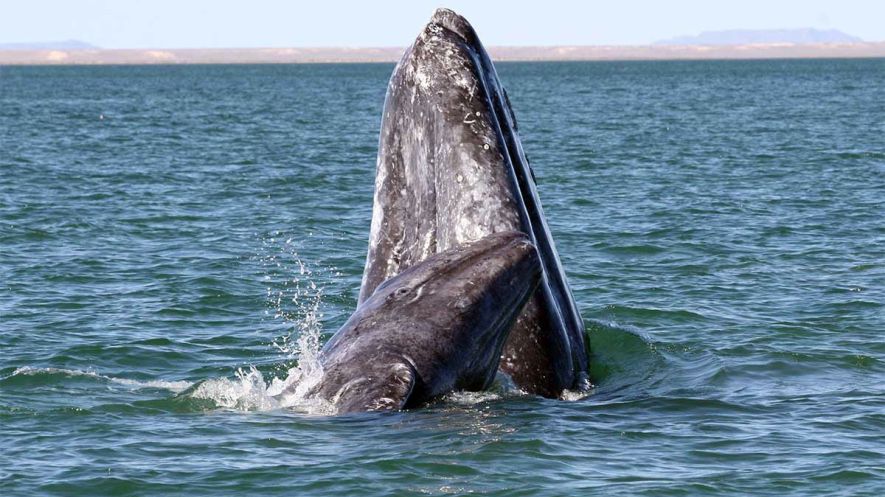Last year scientists combined infrared cameras with image recognition software to automatically detect and count migrating gray whales. This year, they upgraded.
Every year, gray whales migrate from their summer feeding grounds in the Arctic to their wintering grounds off Baja California in Mexico. And roughly every other year, scientists with binoculars count them as they funnel past a point on the California coast a bit south of Monterey Bay. Scientists conduct this survey to keep track of how well the population is doing, and lately they’ve had a new set of eyes to help with the job.
Three eyes, to be exact. Each one is a thermal imaging camera that captures the blow from a whale as it surfaces to breathe.
“A whale is this great big motor that takes in a breath of air and holds it inside for a long time,” said Wayne Perryman, a NOAA Fisheries scientist who helped develop the new system. “When it exhales, the air is much warmer than the background, and we can detect that difference very easily, both day and night.”
An infrared video showing a pair of gray whales, as well as birds and dolphins can be viewed at http://becove.me/5psy5pnn.
“One challenge was getting the detector to be as accurate as possible without having it get fooled by too many false alarms,” said Dave Weller, the NOAA Fisheries scientist who leads the survey team.
In addition, every time the computer sees a blow, it predicts where and when that same whale will surface to blow again. That prediction algorithm, which is based on years of research into gray whale diving behavior, allows the computer to track individual whales. “If you don’t have a way of tracking individuals, you can double-count some whales or miss them altogether,” Weller said.
“The new system vastly increases our sample size,” Weller said. “That means we can do a better job estimating the abundance of the population.”
For now, human observers are still working the survey to ensure that the automated system produces comparable results. In the meantime, researchers face the challenge of handling the huge volumes of data the system produces.
Weller expects more than 70 terabytes of data to pile up this season. “We’ve entered the world of Big Data, but we’re still figuring out how to permanently archive such massive volumes of information,” he said.
Scientists still need to keep track of gray whale populations, however. Despite their recovery, the animals are at risk from ship strikes, entanglement in fishing gear, and other human impacts. Also, as the climate changes, scientists want to know if changes in Arctic ice cover are correlated with changes in population size or timing of the migration.
And so, with a bit of technology, the count goes on.



